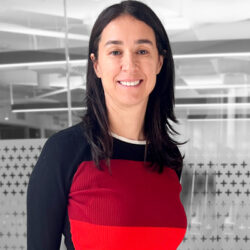
How a Multicultural Marketing Research Moderator Continues to Learn about Evolving Cultures
Filed Under: Multicultural, Consumer Empathy
Ana Villodres
Senior Director, In-Person Qualitative Research
As a moderator, I feel fortunate to have the opportunity to talk to people from all walks of life and various backgrounds about different topics. I know I’m doing this on behalf of my clients, analyzing these discussions and then passing on recommendations so they can make more informed decisions. Conducting these interviews, however, is the part of my job I love the most. Of course, as moderators, when we’re interviewing respondents, it’s super important that we’re present and engaged in every part of the discussion, but often after the fact, the people tend to blend together. To be honest, I would be hard-pressed to recall the specific names or faces of those I spoke with a month ago. But this was not the case for one of my recent participants.
For the sake of anonymity, I’ll call her “Ayan.” Ayan is a beautiful, eloquent, genuinely funny, Black Muslim woman. Our conversation was very fluid – nothing out of the ordinary. But, when I asked if her cultural background impacted how she defines beauty, her eyes lit up, and the conversation was no longer ordinary. She went on and on about this topic – it was as if she had been eagerly waiting for someone to ask her this question. It was apparent to me that she needed an opening to express her thoughts and feelings about the complexity of beauty in her culture.
Our time together flew by. In fact, we talked longer than the allocated time. We created a special bond – she shared; I listened and digested everything single word she expressed to me.
Ayan shared how the young Muslim generation (including her and her friends) is redefining beauty for its culture. In doing so, they challenge their ancestors’ association of beauty with religion. She explained that in the Muslim faith, many people (especially older generations) believe that God created them in his eyes, and they should not alter their appearances. Therefore, most Muslim women have been raised to maintain modesty in their physical appearance so as to not attract attention to themselves.
Growing up, Ayan yearned to “fit in” at school — to have the freedom to express herself through her appearance like everyone else. After many passionate conversations with her parents, they finally came around and allowed her to express herself through beauty. Her parents didn’t necessarily agree with Ayan’s views but began to understand that beauty doesn’t necessarily mean disrespecting their religion.
“My religiosity doesn’t correlate with my standard of beauty. Those two things are not the same. The standard of beauty is just how you feel about yourself. We are all women.”
While Ayan is still a practicing Muslim and adheres to many customs of her religion, like shielding her hair from others and praying five times a day to honor the Lord, she also uses makeup, skincare products, and colorful scarves (known as hijabs) to express her beauty and identity.

The hijab is one name for a variety of similar headscarves. It is the most popular veil worn in the West. These veils contain one or two scarves covering the head and neck. Outside the West, this traditional veil is worn by many Muslim women in the Arab world and beyond.
Before meeting and talking with her, I was unaware of the multitude of colors and textures that hijabs come in or how they can be worn. Even though covering her hair with a hijab (so that no one sees it) is a daily routine for Ayan, she puts a lot of attention and thought into it. This is her way of “fitting in” and expressing her unique identity.
The interview with Ayan stayed with me – it caused me to reflect beyond providing implications to my client. Given our diverse, multicultural population, it made me think about how cultural nuances are more important than ever before. I’m sharing my key takeaways from this interview for brands to consider:
- Culture is fluid – Make a commitment to understanding the cultures of your audience, especially their evolving customs and traditions, with the goal of building empathy. Future marketing efforts grounded in consumer empathy will resonate with them.
- For any culture, realize that religion can greatly influence consumers’ attitudes and buying behaviors for food, beauty, and healthcare, to name a few. Make sure you understand how different religions can impact your category and how it might vary from older generations and younger generations.
- Realize that no cultural group is homogenous — what you see on the outside isn’t necessarily what defines you (it’s what’s in the inside). That is, the commonality is defined by similar truths or values, rather than the color of someone’s skin.
- Messaging grounded in values/attitudes (such as family-focused, a desire to fit in, or challenging the status quo) will resonate with those audiences.
Recently, I ran into a teenager on the street with a colorful hijab covering her hair; and it immediately brought a smile to my face as I recalled my time with Ayan. Knowing what I know now about Muslim women in today’s world has truly opened my eyes, helped me build empathy and understanding, and made me a better person. As mentioned before, I’m so grateful that I’ve chosen to be a moderator as my career and that I had the opportunity to meet and learn from someone like Ayan.
explore featured
Case studies

